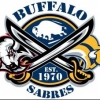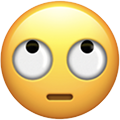-
Posts
1,554 -
Joined
-
Last visited
Content Type
Profiles
Forums
Events
Everything posted by sabresparaavida
-
Chill with that, people don’t just want you gone (even if there might be 1 or 2). Yes, you are a lil too negative for my taste at times, but I know we still can have good discussion (see Power/Dahlin thread).
-

Dahlin or Power, Who Will Have The Better Career?
sabresparaavida replied to bob_sauve28's topic in The Aud Club
For the full year, Dahlin was 3rd among D in ice time, though IIRC he was getting PP1 time, so when it came to even strength minutes, he was 2nd pairing. Risto was getting workhorse minutes, and Bogo was getting 1st pairing even strength minutes. Part of it was the injuries, as Samuelson and Dahlin weren’t always playing together. As for the benefit of playing behind a better player, I don’t think Power got as much as you think, with Housely playing Risto in the tough minutes, similar to how Dahlin was getting the tough minutes this year. Dahlin his rookie season got next to no PK time, but Power had a significant amount. I think another big difference is Housely kept the pairings a little more Rigid than Granato, who seemed to switch up his pairings more mid game depending on the situation. Power was averaging about a minute more than Samuellson at even strength last year. -

Dahlin or Power, Who Will Have The Better Career?
sabresparaavida replied to bob_sauve28's topic in The Aud Club
Not so sure that this is completely accurate, Dahlin was somewhat sheltered in his rookie season, he was behind Risto, Bogo, and Montour in ice time. (Montour only here for 20 games though). Power played a full 2.5 more minutes per game than Dahlin in his rookie season. -

Dahlin or Power, Who Will Have The Better Career?
sabresparaavida replied to bob_sauve28's topic in The Aud Club
The team itself was definitely worse, but was it worse defensively? Dahlin’s rookie year we gave up 271 goals compared to 300 last year. Between the better goaltending and league wise scoring increase, I’d say the team was probably comparable defensively. -

Dahlin or Power, Who Will Have The Better Career?
sabresparaavida replied to bob_sauve28's topic in The Aud Club
I’d like to apologize, this morning I realized much of my analysis up thread was flawed.The numbers I was looking at for both players were for all situations, which would help Dahlin as he was getting PP1 time in his rookie season. While I still think the data shows that Dahlin was better, it is a lot closer (at least on defense) than what I was seeing last night. Dahlin at even strength had a significantly higher CF/60 than Power, as well as a higher FenwickF/60. It is pretty clear that Dahlin drove more offense in his rookie season than Power did. The defensive numbers are pretty close though. Power had a lower CA/60, but a higher FenwickA/60. The conclusion to be drawn there is that while the Sabres gave up more shots while Dahlin was on the ice his rookie season, Owen Power was on the ice for more a good chunk more high danger chances. The gap in Ozone starts shrunk, with Dahlin having 3% more Ozone starts. After diving back in, I think that Dahlin was undeniably better offensively in his rookie season, but defensively, they were so close that it’s hard to pick out who was better. I’d give a slight edge to Dahlin, as his team relative stats were better. (Power actually had a team relative FF%). -

Dahlin or Power, Who Will Have The Better Career?
sabresparaavida replied to bob_sauve28's topic in The Aud Club
I was reading through this thread and saw people on opposite sides, some saying Dahlin was better in his rookie season (at both ends of the ice), some saying Power was (or at least defensively). This got me pretty curious, so I decided to dive in a bit into their analytics. What I discovered was that the bolded was wildly inaccurate. Dahlin was better in just about every metric. CF, CA, relative CF, relative CA, Fenwick for and against. And when you check the team relative stats, the difference just grew bigger. Owen Power had a team relative CF % of 0.5%. This means that for every 200 shots taken, when Owen Power was on the ice, 1 more was for the Sabres than when he wasn’t playing. Meanwhile, in Dahlin’s rookie season, he had a whopping 10.6% team relative cf%. To be fair to Owen Power though, he is a larger player, and taller players tend to take longer to develop. Dahlin also had a higher Ozone start rate at 65.6%, compared to Power’s 56.6%. however, the Ozone starts do not make up the difference in the rest of the advanced stats, which pretty clearly show that Dahlin had a better rookie season. When you add that to Dahlin being a full year younger than Power for their respective seasons, it is pretty clear that Dahlin was ahead of where Power is now, when he was his age. Again though, that could be somewhat due to Power not having grown into his body yet. If any of you are curious, and wish to check some of the stats for yourself, I attached the links I checked here. power: https://www.hockey-reference.com/players/p/powerow01.html Dahlin: https://www.hockey-reference.com/players/d/dahlira01.html -
Was Barbashev the 1C on his cup team? I didn’t say I completely agreed with the list, I think Eichel should be down a couple spots, but i definitely don’t think it’s too far off. Thompson is more dangerous offensively, mainly when it comes to scoring goals. However, Eichel this year played much better in his own zone than Thompson did, which balances the scales some. He also was an elite playoff performer, and came in 2nd for the Conn Smythe in his first playoff appearance. I think it’s reasonable to put Eichel ahead of Tage, but I wouldn’t call you crazy for the reverse.
-
1. McDavid 2. McKinnon 3. Draisaitl 4. Matthews 5. Crosby 6. Hughes 7. Point 8. Eichel 9. Barkov 10. Pettersson Only ones that I feel are reasonable to question are Eichel, Barkov and Pettersson, but Eichel won the cup last year, Pettersson broke 100 points, and Barkov has been pretty damn good for a while and plays a more complete game.
-

How many days until the Sabres season
sabresparaavida replied to Crusader1969's topic in The Aud Club
Not even trying? He added Stillman and Greenway at the trade line, and it was widely reported that he went after Chychurn, willing to part with a first for him. He tried to push the team into the playoffs last season, but he wasn’t willing to do that at any cost, which was the right decision. Even if we added Chychurn and squeaked into the playoffs, we’d have been unlikely to beat any of the Bruins in round 1, the leafs in round 2, Carolina in round 3, or Vegas in the cup. -

The Prokhor Poltapov Appreciation Thread
sabresparaavida replied to Crusader1969's topic in The Aud Club
I would look again, especially at the second angle, that pass would have had to be in the air for a deflection in, not much less difficult than the shot Poltapov made. -

Sens sign Tarasenko 1 year $5 million...
sabresparaavida replied to matter2003's topic in The Aud Club
I had a weird dream last night where Tarasenko retired before the season even started. -

Hot takes gone cold? Revisit your Sabres agita
sabresparaavida replied to Stoner's topic in The Aud Club
Okay? Did I argue with that? Obviously Draisaitl is the better player, and would have been the better pick. No one here is disputing that. I just don’t get why you are trying to argue that we should have picked Draisaitl because Reinhart isn’t a first line player. He is a first line player, but Draisaitl is just one of the best players in the league, as evidenced by him winning the hart. -

Hot takes gone cold? Revisit your Sabres agita
sabresparaavida replied to Stoner's topic in The Aud Club
Some (many) teams choose to spread out their best talent so that they can have more balanced scoring, one of those teams is Florida. He was 3rd in Ice time, which means Florida views him as a first line calibre player on their team, even if he didn’t play with the other first liners much. Is Bunting better than Nylander? Because according to your logic, Bunting got a lot of time with Matthews and Marner, so he’s the first line forward, despite Nylander scoring 40 goals and being 3rd in Ice time. -
There are a couple of reasons: 1. He’s going to be here for a minimum of 4 more years anyways, barring extreme circumstances. 2. The Sabres in a couple years will have the talent to run 2 very strong power plays that can practically split the PP time. Tuch, Thompson, Skinner, Cozens and Mitts are good PP options, Quinn and JJP should develop into good options, and Benson/Savoie/Kulich/Rosen/Östlund should be good options for the 8th forward spot/if any of those players prove to not be worth a spot. Our second PP will be better than most team’s 2nd PK unit and could prove to be more or equally productive than our first unit in time.
-

Sens sign Tarasenko 1 year $5 million...
sabresparaavida replied to matter2003's topic in The Aud Club
out of curiosity, what holes would you like filled, and who are the players you’d like to explore trading for? -

Sens sign Tarasenko 1 year $5 million...
sabresparaavida replied to matter2003's topic in The Aud Club
I don’t think Adams is completely set against trading his prospects, it just has to do more with timing. The Sabres have a good shot at the playoffs next season, and I believe Kevyn Adams expects this team to make it. I also believe, as I’m sure Kevyn Adams does, that this team has a very slim chance at the cup, and the chances would still be very slim this year almost regardless who this team brings in. The team has nearly no playoff experience. We also haven’t seen consistent good defensive play, which spells for big trouble come playoff time. If we had the splashiest offseason, it might move us from a 2%chance to a 3% chance of winning the cup. Unless there are good, cost controlled assets with some term available, sending out prospects right now doesn’t make a ton of sense. This could change if we breakout like New Jersey did last year, and maybe it makes sense for some moves mid-season, but right now, the long term plan still looks like the better priority. -
I think this year the Atlantic will be a sort of evening out. Every team in the bottom half should be better to some degree, mostly from development and in some cases the offseason adds. The top half (aside from Florida, who squeaked into the playoffs last year) got worse between age and departures. The Bruins forwards as a whole got older and slower, and their center spine is now the worst in the division, but they still have a high end defense and good goalies. They likely end up somewhere 3-5 in the division The lighting got older and were really wearing down last year. They didn’t really add much this offseason and are trending downwards, they could still snag a playoff spot, or they might end up 9th or 10th in the conference. The leafs got slightly worse than where they were at the end of the year last year IMO, but still should have a strong regular season team. Their defense got slightly worse, and their backup goaltending situation is questionable at best. We’ll see what moves go down to get them cap compliant, but I don’t expect those to have a big impact. They are likely to be the best regular season team, but should have less easy games (though also less games against better teams). Florida had some pretty big improvements this offseason (at least for their regular season ability). I think their defense got significantly better, and they are probably the most likely to contend with the leafs for the top of the division. The Sabres should be better from development and improved defense depth. The goaltending is questionable, and the forward depth is concerning. They likely contend with the Lightning, red wings and Bruins for 3-6. The redwings should be somewhat better. They have some young pieces that should develop (I expect Seider to bounce back), and Debrincat is a pretty big add for a team that wasn’t far behind the Sabres. The Senators likely improve with a healthy Josh Norris and some development, but they are still a ways away from making it to the playoffs in this division. The Canadiens should be better, again from development, but nowhere near a wildcard spot.
-
While their forward group is nowhere near frightening anymore, their defense and goaltending are still high end, and they still have good coaching/a strong defensive system. I’d expect a team somewhere similar to the Kraken last season.
-
Might have missed it, but Aho signed an 8 year $78 million contract extension with the canes today.
-
One more thing to note: last year, of the Sabres 13 forwards that played the most games, only Peterka, Jost, and Girgensons had less TOI/G. (Krebs and Quinn were tied) In terms of playing time, Quinn was around our 9th forward in a given game. It’s not completely unrealistic that one of these players gets similar minutes, even if they will not used be the same situationally (less Ozone starts, no PP time, maybe more PK time)
-
While none of those players are remotely likely to take Quinn’s spot in the lineup, they will be the ones competing for his roster spot. It’ll most likely be everybody 5/6 forward and below shifting up a spot, with these players competing for the 12th or 13th forward spot.
-
I would think long and hard about it and likely say no, but that has more to do with the Sabres situation than his value as a player. For the same reason I have not been a proponent of adding Pesce, I don’t think we can afford to add a 6M+ defenseman for more than 2 years. Doing so puts us in a space where we will not be able to afford Levi (if he becomes a legit starter, if not, the goalie we bring in to be one). And we also have Dahlin and Power for LHD that will eat up a lot of O zone time which would make Dunn less effective. I think right now Dahlin is better, but Dunn is currently better than Power, though I expect that to change within a few years. Dunn was 10th among defenseman in points, and has had great analytics for nearly his whole career. He led the Kraken in ice time and still had Corsi and Fenwicks over 54%. (Helped some by the Ozone starts). He is now the 25th highest paid defenseman, which seems quite reasonable.
-
At the time Lindholm signed, his career high was 34 points. Weegar’s best was 44 points. Obviously there is more to value than just point production, but with the cap going up, I think that deal is pretty damn fair.






